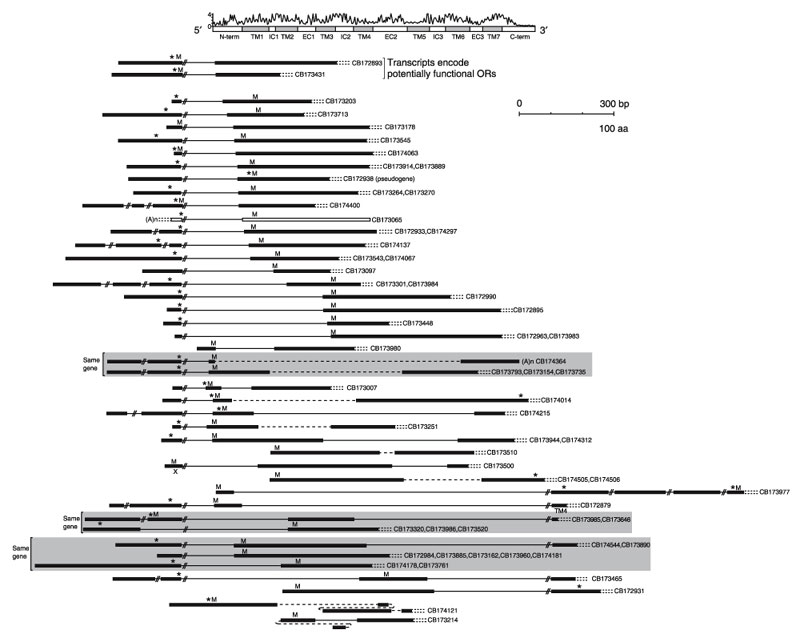Figure 6.

Sixty-two olfactory receptor cDNAs use splice sites within the coding region. The bar at the top represents an alignment of all olfactory receptor proteins, with transmembrane (TM) regions shaded gray and intracellular (IC) and extracellular (EC) loops in white. Above the bar, the jagged line plots information content [51] for each alignment position, with higher values representing residues conserved across more olfactory receptors. cDNAs with atypical splicing are plotted below, aligned appropriately to the consensus representation. Genbank accessions for each cDNA are shown on the right, and where more than one clone represents the same isoform, both names are given, but a composite sequence is drawn. Multiple isoforms from the same gene are grouped by gray background shading. Thick black lines represent cDNA sequence, and thin lines represent intronic sequence (with diagonal slash marks if not drawn to scale). The uppermost two cDNAs encode potentially functional olfactory receptors. A single cDNA drawn as white boxes (CB173065) is cloned into the vector in the reverse orientation. Introns that result in a frameshift relative to the olfactory receptor consensus are drawn as single dashed lines. The first in-frame methionine in the cDNA is marked with an 'M', and the first stop codon 5' to this methionine (if any) is marked with *. Most sequences are incomplete at the 3' end, as represented by paired dotted lines, although two sequences (CB174400 and CB174364), marked with '(A)n', contain the cDNA's poly(A) tail. The 'X' on sequence CB173500 marks an exon that does not align with genomic sequence near the rest of the gene or anywhere else in Celera's mouse genome sequence, and 'TM4' on sequence CB172879 notes an exon that matches to the reverse-complement of the fourth transmembrane domain of the next downstream olfactory receptor gene. For the two lowermost cDNAs, exon order in the cDNA clone is inconsistent with the corresponding genomic sequence, as represented by the curved intron lines.
